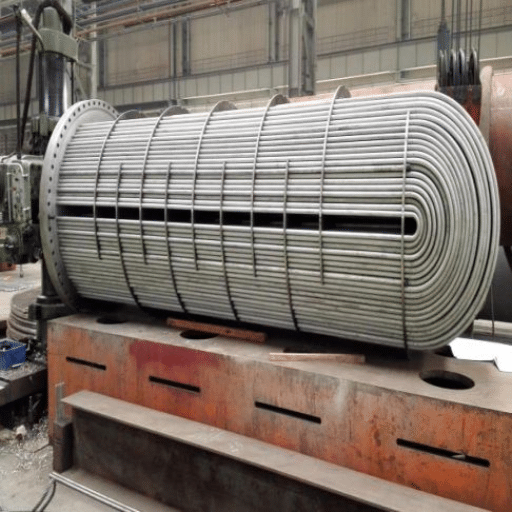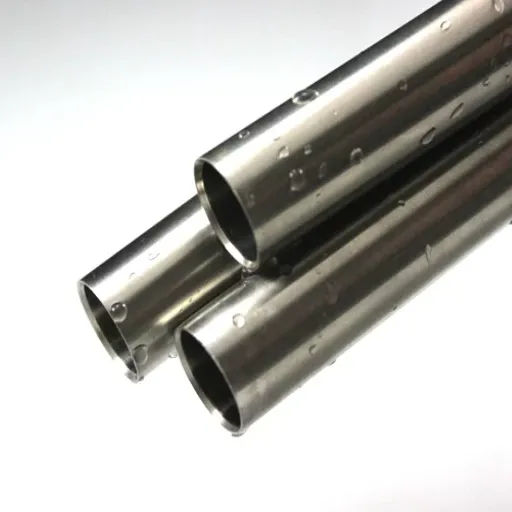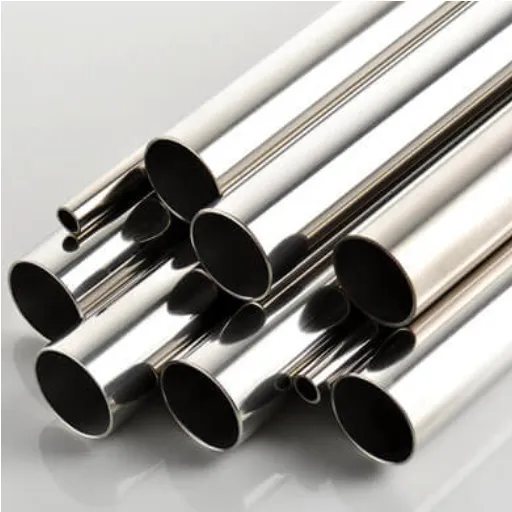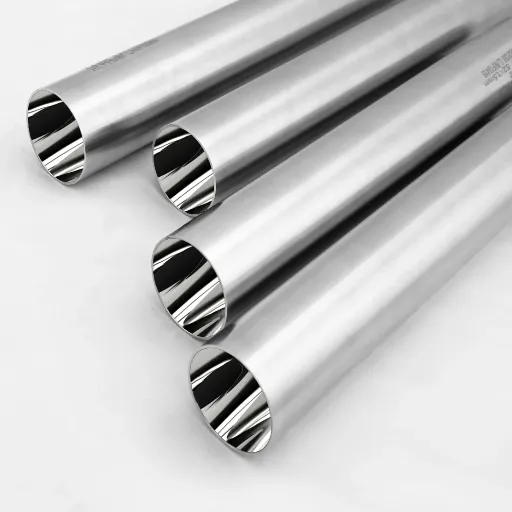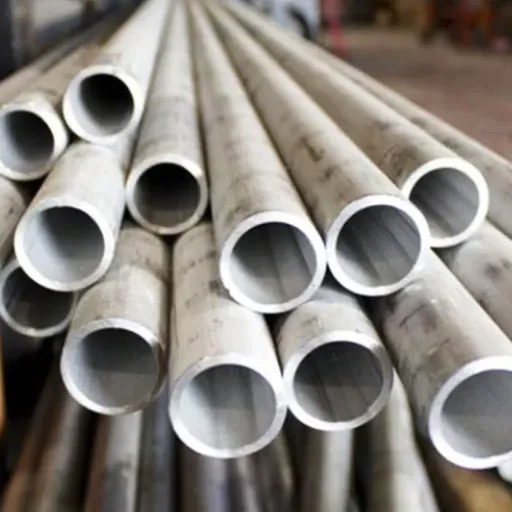Whenever choosing between silver and stainless steel, a lot of people consider the merits and drawbacks of each material. They are both, however, recognized for their unique attributes and thus have a wide range of applications, from being used in jewelry and cutlery to house and industrial appliances and even more. Yet what actually makes the difference? This article takes a close look at silver and stainless steel by examining their durability, appearance, and usability in daily life. If you are looking to either buy a classic ring or pick the right material for kitchen utensils, then this detailed guide will certainly enable you to take an informed decision. Continue reading to see how these two metals compare with each other and find out the one that is more suitable for your requirements.
Understanding the Basics of Stainless Steel and Sterling Silver

Stainless steel and silver sterling are metals that are very different from one another in terms of characteristics but still very popular in their use. Stainless steel, which is composed mainly of iron along with chromium and some other elements, forms a metal that is very hard to break, rust will not spread to it, and it is all the same very cheap to keep up with. The resulting product finds most of its applications in the manufacturing of tools, kitchenware as well as modern jewelry, thanks to being both strong and easy to access.
In contrast, sterling silver is an alloy consisting of 92.5% pure silver and 7.5% other metals, most usually copper. Besides its high quality, silver is one of the metals to earn the highest admiration. This is why it has become a popular choice not only for fine jewelry but also for decorative items. Silver’s bright luster and classic beauty are among the reasons why it is gaining more and more people who want to own it. However, silver is still a dearer metal than its counterpart and thus, cannot be avoided in the process of tarnishing, hence, not free of demanding regular upkeep to maintain its luster. Both of these materials possess their very own unique benefits thus, the decision on which one to go with is made based on the intended use and personal taste.
What is Stainless Steel?
Stainless steel is an alloy with excellent corrosion resistance which is mainly iron, chromium, and other elements like nickel, carbon, or molybdenum, and its specific grade and application determine the alloy’s composition. The oxide layer known as the passive layer, is formed because of the chromium content, which is a minimum of 10.5%, and this layer stops rust and keeps the surface clean. Due to this property, stainless steel is a material with a very long life and very little maintenance, and hence it is considered for many applications from kitchen appliances, medical instruments, constructions, and even jewelry. Its ability to combine with various metals, its durability, and its modern look account for its high demand in different industries.
What is Sterling Silver?
Sterling silver is a top-notch alloy that, in the most part, consists of silver, where 92.5% is the purest silver and 7.5% are different metals, most often copper. At first, copper is added to silver to make it even stronger and more durable, which will be enough for crafting jewelry, cutlery, and decorative items without losing silver’s shine. Sterling silver is very often the most desirable of all metals because its marvelous glow has a drawback in that it easily loses its beauty, like all other metals, when exposed to air and moisture. Thus, regular cleaning and proper storage take care of the issue and help to maintain its good looks. Its ageless charm and ability to blend in with almost any style made sterling silver the people’s favorite in both modern and traditional designs.
Key Differences Between Stainless Steel and Sterling Silver
Quick Answer:
Stainless steel is more durable and low-maintenance, while sterling silver is shinier, more elegant but requires regular upkeep.
Summary Table:
|
Key Point |
Stainless Steel |
Sterling Silver |
|---|---|---|
|
Durability |
Highly durable |
Less durable |
|
Maintenance |
Low maintenance |
Requires regular polishing |
|
Appearance |
Matte or shiny |
Bright, reflective |
|
Weight |
Heavier |
Lighter |
|
Cost |
Affordable |
More expensive |
|
Elegance |
Modern look |
Classic, elegant |
|
Corrosion |
Corrosion-resistant |
Prone to tarnishing |
|
Resizing |
Difficult |
Easier |
Durability: Stainless Steel vs Sterling Silver
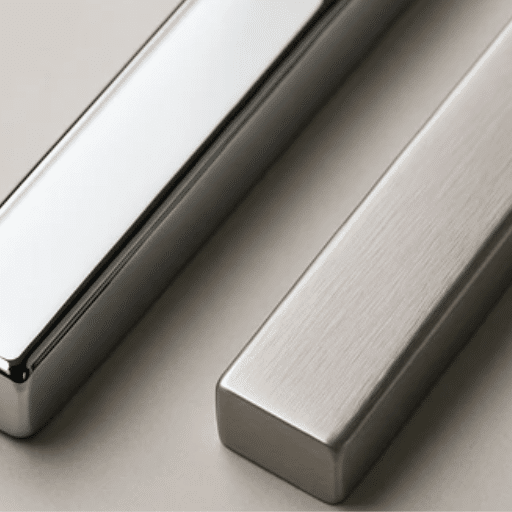
Quick Answer:
Stainless steel is highly durable and scratch-resistant, while sterling silver is softer, more malleable, and prone to tarnishing.
Durability of Stainless Steel
Stainless steel is a material that is highly regarded for its outstanding durability and thus it has a wide range of applications all over the world. Below are five critical points that confirm the durability of stainless steel:
- Rust Resistance: Stainless steel has chromium, which creates a shield on the outside, thus making the steel immune to rust and corrosion even in most difficult times and places.
- High Tensile Strength: It has the superb property of tensile strength that enables it to endure heavy weights and even structural stress without breaking or losing its original shape.
- Impact Resistance: Stainless steel is able to take a lot of impacts without getting cracked or damaged, which makes it a good material for use in places where impact happens frequently.
- Temperature Tolerance: It keeps its strength and performance unaffected over a wide range of temperatures, from very cold to very hot, thus retaining its overall texture.
- Wear Resistance: Being endowed with hard and non-porous surface, stainless steel takes practice and nonchalance really well, it even triumphs over scratches and abrasions which is why it has a long life.
Durability of Sterling Silver
Softness and Malleability
Sterling silver’s softness gives it a disadvantage of being more easily scratched and dented when compared to stainless steel. On the other hand, its softness is also a great advantage in the production of intricate and delicate designs so it’s perfect for skilled craftsmen.
Corrosion Resistance
The degree to which sterling silver can tarnish is a direct result of its copper content, but regular polishing and proper storage can effectively combat the effects of corrosion and keep the metal looking good.
Longevity with Care
With proper care, sterling silver can be passed down through several generations. Its long-lasting nature comes from regular cleaning and the avoidance of chemical exposure.
Sensitivity to Impact
Impact resistance of sterling silver is inferior to that of stronger alloys because of its softness. It is more suited for the creation of objects that will not be subjected to heavy impacts and will have light or moderate use.
Temperature Tolerance
Moderate changes in temperature do not affect sterling silver significantly, but extreme heat may result in melting. It is advisable to place items made of sterling silver away from heat sources that might distort their shape or ruin their integrity.
Comparison of Durability for Everyday Use
Quick Answer:
Stainless steel is more durable and resistant to wear for everyday use, while sterling silver is softer and requires more care.
Aesthetics: Silver vs Stainless Steel
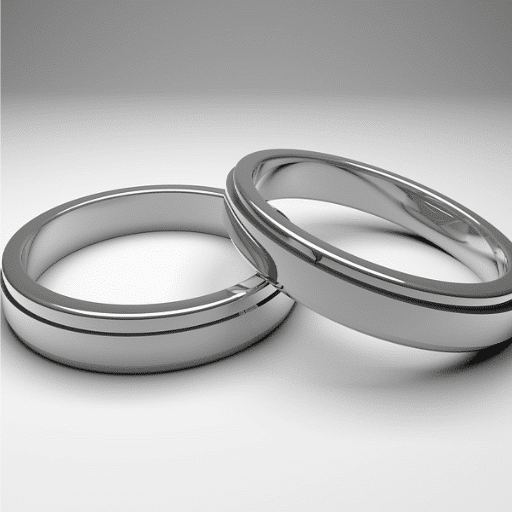
Quick Answer:
Sterling silver offers timeless elegance and luxury, while stainless steel provides a modern and sleek aesthetic.
Visual Appeal of Sterling Silver
The visual qualities of sterling silver are captivating and have been appreciated for centuries. Its surface that is bright and reflective, emitted by a warm glow that is suitable for both formal and casual occasions. The following five points are the main arguments in favor of the attractiveness of sterling silver:
- ✦
Lustrous Shine: The sterling silver has a luster that is polished and looks like a mirror, thus giving the maximum reflection. - ✦
Versatile Style: The color of silver which is neutral goes well with different colors of gemstones and different outfits. - ✦
Classic Elegance: The silver tone is associated with luxury and grace. - ✦
Aging Gracefully: With the passage of time, sterling silver gets a natural look that is both attractive and interesting. - ✦
Ornamental Detailing: The softness and pliability of sterling silver allow the production of very fine and intricate designs.
Visual Appeal of Stainless Steel
- ✦
Sleek and Modern Finish: The brilliant and polished steel surface of stainless steel goes hand in hand with the contemporary designs and aesthetics. - ✦
Resistant to Tarnish and Corrosion: Stainless steel still looks great with very little cleaning while maintaining its appearance over time. - ✦
Wide Range of Finishes: Besides satin and mirror finish, stainless steel also provides many other kinds of finish to choose from according to the different preferences and design needs. - ✦
High Durability: The product’s tough and abrasion-resistant nature makes it possible for stainless steel to always be visually appealing even in the most demanding application areas. - ✦
Reflective Properties: Due to the reflection of stainless steel, it can play the role of a light enhancer and therefore, create an open and modern feel in different kinds of places.
Choosing Based on Occasion: Special Occasions vs Everyday Use
Quick Answer:
Sterling silver is ideal for special occasions due to its elegance, while stainless steel is perfect for everyday use because of its durability and low maintenance.
Maintenance and Care: Sterling Silver and Stainless Steel
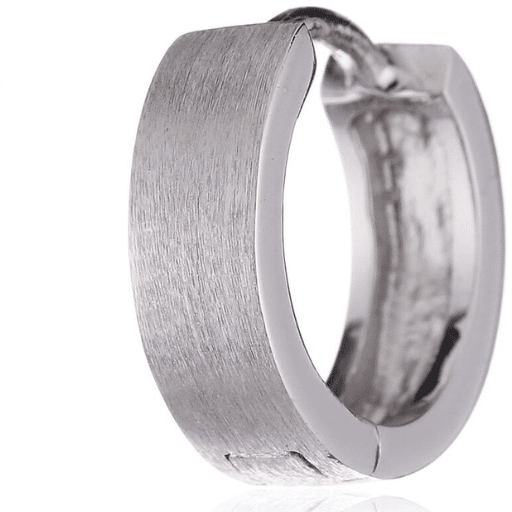
The brilliance and life of both sterling silver and stainless steel are highly dependent on proper cleaning and caring. Here are essential tips for each material:
Sterling Silver Care
- Polishing Regularly: Use a specific polishing cloth and silver to control oxidation and show up the brilliance.
- Avoid Chemicals: Do not let the sterling thing come close to strong chemicals, for instance, bleach, ammonia, or household cleaning agents.
- Storage: Place it in airtight bags made of tarnish-proof material or a jewelry box with anti-tarnish strips.
- Moisture Control: Do not let it come into contact with high humidity or water for a long time, as this speeds up tarnishing.
- Use Professional Cleaners: Once in a while, use a specialized silver cleaner to deep clean and keep the lightness.
Stainless Steel Care
- Clean with Soap and Water: Wash items or jewelry made of stainless steel with warm water and mild soap, and then dry them well.
- Avoid Abrasive Materials: Clean stainless steel with a soft cloth; this way, scratches will not occur.
- Protect from Chemicals: Avoid stainless steel coming in contact with chlorine or any other corrosive chemicals.
- Buffing for Shine: A polishing cloth for stainless steel should be used to buff and keep the surface shiny.
- Proper Storage: Store in a pouch or compartment separately to avoid scratches caused by other items.
Cleaning and Maintaining Stainless Steel Jewelry
- Regular Cleaning: Regularly clean your stainless steel jewelry using lukewarm water and a gentle dish soap. After rinse, wipe with a soft cloth that does not leave lint and is very absorbent to avoid forming water spots.
- Avoid Harsh Chemicals: Do not expose your jewelry to harsh chemicals like bleach or chlorine, because they can cause not only discoloration but also damage.
- Use a Polishing Cloth: Use a stainless-steel polishing cloth to gently buff your jewelry and thus restore its shine and remove fingerprints or smudges.
- Handle with Care: Do not wear stainless steel jewelry when doing heavy tasks to avoid accidental scratches or dents; rather handle it with care.
- Store Properly: For preventing scratching or tangling with other items, store each item separately in a soft pouch or a lined jewelry box.
The proper care will ensure that your stainless-steel jewelry retains its beautiful appearance and durability for years to come.
Cleaning and Maintaining Sterling Silver Jewelry
Sterling silver is a classic and graceful metal, but it demands the right kind of care to keep its glow and avoid tarnishing. To clean and maintain your sterling silver jewelry, here are five indispensable tips:
- Use a Soft Cloth: Do not forget to polish your sterling silver regularly with a soft cloth. This will help to remove the tarnish, gain back its shine and keep it luminous.
- Clean with Mild Soap and Water: Gentle dish soap mixed with warm water can be your great ally in cleaning your sterling silver jewelry when a soft brush or cloth is used. Rinse off very well with water and dry very well with a soft towel.
- Avoid Contact with Chemicals: You should keep your sterling silver jewelry at a distance from strong chemicals like chlorine, household cleaners, and cosmetics as they are the ones which eventually cause the discolouration or damage of the metal.
- Store in Anti-Tarnish Bags: Sterling silver should be stored in anti-tarnish bags or wrapped in acid-free tissue paper to keep out air and moisture that promote tarnishing.
- Wear Your Jewelry Regularly: Surprisingly, wearing sterling silver regularly can slow down the tarnishing process because the natural oils on your skin act as a protective layer against oxidation.
So, if you take these steps, your sterling silver jewelry will still be radiant and beautiful after several years.
Long-term Care for Both Materials
To make your jewelry last and look good, it is a must to take caring measures not only to sterling silver but also to other materials that might be gold, gemstones or stainless steel. Five tips for long-term care are given in detail below:
1
Store Your Jewelry Properly
Store your pieces in jewelry boxes that are lined with soft fabric or in anti-tarnish pouches. Keeping each item apart lowers the chance of scratching and also inhibits chemical interactions that cause tarnishing or dullness.
2
Avoid Chemicals
Do not let your jewelry come in contact with strong chemicals like cleaning agents, perfumes, and chlorine. For instance, chlorine in the swimming pool can cause the metals to lose their strength and color, the same goes for sterling silver- a metal that is considered delicate.
3
Clean Regularly and Gently
The cleaning method will depend on the material—polish sterling silver with a soft cloth or wash gold with warm soapy water. Although ultrasonic cleaners are effective for some types of gemstones, they can destroy the softer ones, such as opals and pearls.
4
Inspect and Maintain
Regularly, check for loose settings, faulty clasps, or worn prongs. For example, the settings that keep the gemstones in place can get weak over time. Professional inspection every year is suggested to be sure that nothing is loose.
5
Minimize Exposure to Moisture and Air
The process of tarnishing in silver and discoloration in some other materials can be accelerated by exposure to humidity and air. To prevent your jewelry from losing its quality, keep silica gel packs or use anti-humidity strips in the storage areas.
Following these practices will help you to have your precious pieces remain luminescent and transformed into classic treasures for many more years to come.
Affordability: Pros and Cons of Stainless Steel and Sterling Silver
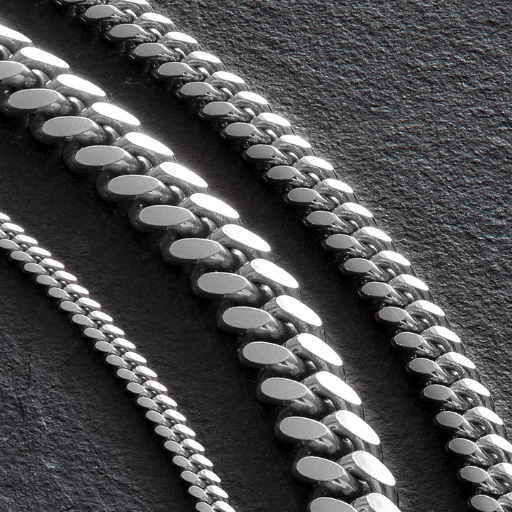
Benefits of Stainless Steel
- ✓
Cost-effective: Stainless steel is a lot cheaper compared to sterling silver, which has made it a choice for jewel lovers with a limited budget. - ✓
Durability of the Price: It is inexpensive, yet stainless steel is tough and overall stronger than silver in aspects of scratching and tarnishing, hence offering great value. - ✓
Low Maintenance: Stainless steel does not need any major repair and this cuts down the expenses of cleaning. - ✓
Accessibility: A bigger market has been created for stainless steel jewellery because of the low price at which it is sold, making it available to more people. - ✓
Budget-friendly for Multiple Purchases: Perfect for the person who is buying several items at once or investing in trend-based items without a big financial commitment.
Drawbacks of Stainless Steel
- ✗
Minimum Resale Value: The worth of a stainless steel piece in the scrap market is really low compared to precious metals like sterling silver. - ✗
Less Complexity of Look: The surface lacks the sophistication or refinement that sterling silver can offer. - ✗
Perceived as Less Luxurious: Stainless steel is a more practical metal and hence is regarded as less luxurious. - ✗
Limited Design Options: High and intricate artistic designs are less common in stainless steel jewelry. - ✗
Nickel Allergy (Seldom): People who have a sensitivity to nickel may suffer from allergic reactions to lower-grade stainless steel alloys.
Advantages of Wearing Sterling Silver
- ✓
Elegant and Glamorous: Sterling silver brings about an age-old and classy look that goes well with any formal setting. - ✓
Higher Sale Value: The precious metal category of sterling silver secures its worth and the selling price is on a higher side too. - ✓
Designs that Can Be Customized: Sterling silver’s softness allows for detailed and lavish designs. - ✓
Luxurious Look: Sterling silver is commonly thought of as a luxury material, contributing to the desirability of the product. - ✓
Heirloom Quality: Jewelry made from sterling silver will remain for generations to come if it is well taken care of, making it a meaningful gift or keepsake.
Drawbacks of Sterling Silver
- ✗
Higher Cost: The initial cost of sterling silver is much higher as compared to that of stainless steel. - ✗
Tarnishing Occurs Over Time: Regular cleaning is needed to keep its shine and this increases the maintenance work involved. - ✗
Very Easily Scratched: Sterling silver is soft and therefore more susceptible to scratches and dents. - ✗
Less Durability: Long-term wearing may lead to visible signs of aging or damage. - ✗
Not for Daily Wear: Because of its gentleness, sterling silver is better off wearing on rare occasions or formal events.
Cost Comparison of Stainless Steel vs Sterling Silver
Quick Answer:
Stainless steel is significantly more affordable than sterling silver, which is priced higher due to its status as a precious metal.
Value Considerations for Jewelry Collections
In the case of a jewelry collection, stainless steel is a very good option for practical, budget-friendly pieces because of the low material cost and the lack of maintenance. However, sterling silver, which is pricier, provides the attraction of precious metal and is suitable for the production of more expensive and honorable items. The choice consistently relies on the equilibrium between the price and the amount of sophistication desired in the collection.
Investing in Quality: Long-term Benefits
The long-term benefits of investing in quality materials for a jewelry collection are very substantial indeed and quite simply, the initial costs are no match for the benefits. Here are five key advantages:
💎 Durability and Longevity
Materials of high quality such as gold, platinum, and sterling silver, are not only prone to damage but also their value stays the same for decades. For instance, a sterling silver bracelet made very well will last easily for 20 years or more if taken care of properly.
✨ Timeless Aesthetic Appeal
The premium materials give a classic and elegant look that is never out of style and hence always accepted in a collection. The trends may come and go but the materials like gold remain as ever.
💰 Resale and Investment Value
To investors, the precious metals and gemstones are not only valuable because of their existence but also due to their tendency to appreciate with time. For the last ten years, gold prices have been steadily climbing up showing potential for financial returns.
🔧 Reduced Maintenance Costs
Good quality of investing means less frequent repairs or replacements turned out to be needed. The lower-grade metals may discolor, get scratched, or break before too long, while the high-quality ones require almost no maintenance at all to keep them in perfect condition.
🏆 Enhanced Prestige and Customer Trust
A collection made of the finest materials is an indication of a high level of skill and artistry and, thereby, attracts customers with discerning taste while also enhancing the reputation of the brand or designer. The high-quality items are usually regarded as more trustworthy and valuable.
References
Effect of Silver on Antibacterial Properties of Stainless Steel
This study investigates the microstructural and antibacterial properties of stainless steel containing silver.
Antimicrobial Particulate Silver Coatings on Stainless Steel Implants
Research on silver coatings for stainless steel implants, focusing on antimicrobial applications.
Chemical Assembly of Silver Nanoparticles on Stainless Steel
This paper explores the assembly of silver nanoparticles on stainless steel for antimicrobial purposes.

